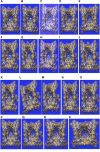Atomic Clusters: Structure, Reactivity, Bonding, and Dynamics
- PMID: 34485247
- PMCID: PMC8415529
- DOI: 10.3389/fchem.2021.730548
Atomic Clusters: Structure, Reactivity, Bonding, and Dynamics
Abstract
Atomic clusters lie somewhere in between isolated atoms and extended solids with distinctly different reactivity patterns. They are known to be useful as catalysts facilitating several reactions of industrial importance. Various machine learning based techniques have been adopted in generating their global minimum energy structures. Bond-stretch isomerism, aromatic stabilization, Rener-Teller effect, improved superhalogen/superalkali properties, and electride characteristics are some of the hallmarks of these clusters. Different all-metal and nonmetal clusters exhibit a variety of aromatic characteristics. Some of these clusters are dynamically stable as exemplified through their fluxional behavior. Several of these cluster cavitands are found to be agents for effective confinement. The confined media cause drastic changes in bonding, reactivity, and other properties, for example, bonding between two noble gas atoms, and remarkable acceleration in the rate of a chemical reaction under confinement. They have potential to be good hydrogen storage materials and also to activate small molecules for various purposes. Many atomic clusters show exceptional opto-electronic, magnetic, and nonlinear optical properties. In this Review article, we intend to highlight all these aspects.
Keywords: Confinement; Electrides; Firefly algorithm; Fluxionality; Hydrogen storage; Particle swarm optimization; aromaticity.
Copyright © 2021 Pal, Poddar and Chattaraj.
Conflict of interest statement
The authors declare that the research was conducted in the absence of any commercial or financial relationships that could be construed as a potential conflict of interest. The reviewer (SG) declared a past co-authorship with one of the authors (PKC) to the handling Editor.
Figures















References
-
- Akhtar F., Liu Q., Hedin N., Bergström L. (2012). Strong and Binder Free Structured Zeolite Sorbents with Very High CO2-over-N2 Selectivities and High Capacities to Adsorb CO2 Rapidly. Energy Environ. Sci. 5, 7664–7673. 10.1039/C2EE21153J - DOI
-
- Bader R. F. W. (1985). Atoms in Molecules. Acc. Chem. Res. 18, 9–15. 10.1021/ar00109a003 - DOI
-
- Baerends E. J., Ziegler T., Autschbach J., Bashford D., Bérces A., Bickelhaupt F. M., Ellis D. E. (2013). “ADF2013. 01. SCM,” in Theo. Chem (Amsterdam, Netherlands: Vrije Universiteit; ).
-
- Bai Q. (2010). Analysis of Particle Swarm Optimization Algorithm. Cis 3, 180. 10.5539/cis.v3n1p180 - DOI
Publication types
LinkOut - more resources
Full Text Sources

